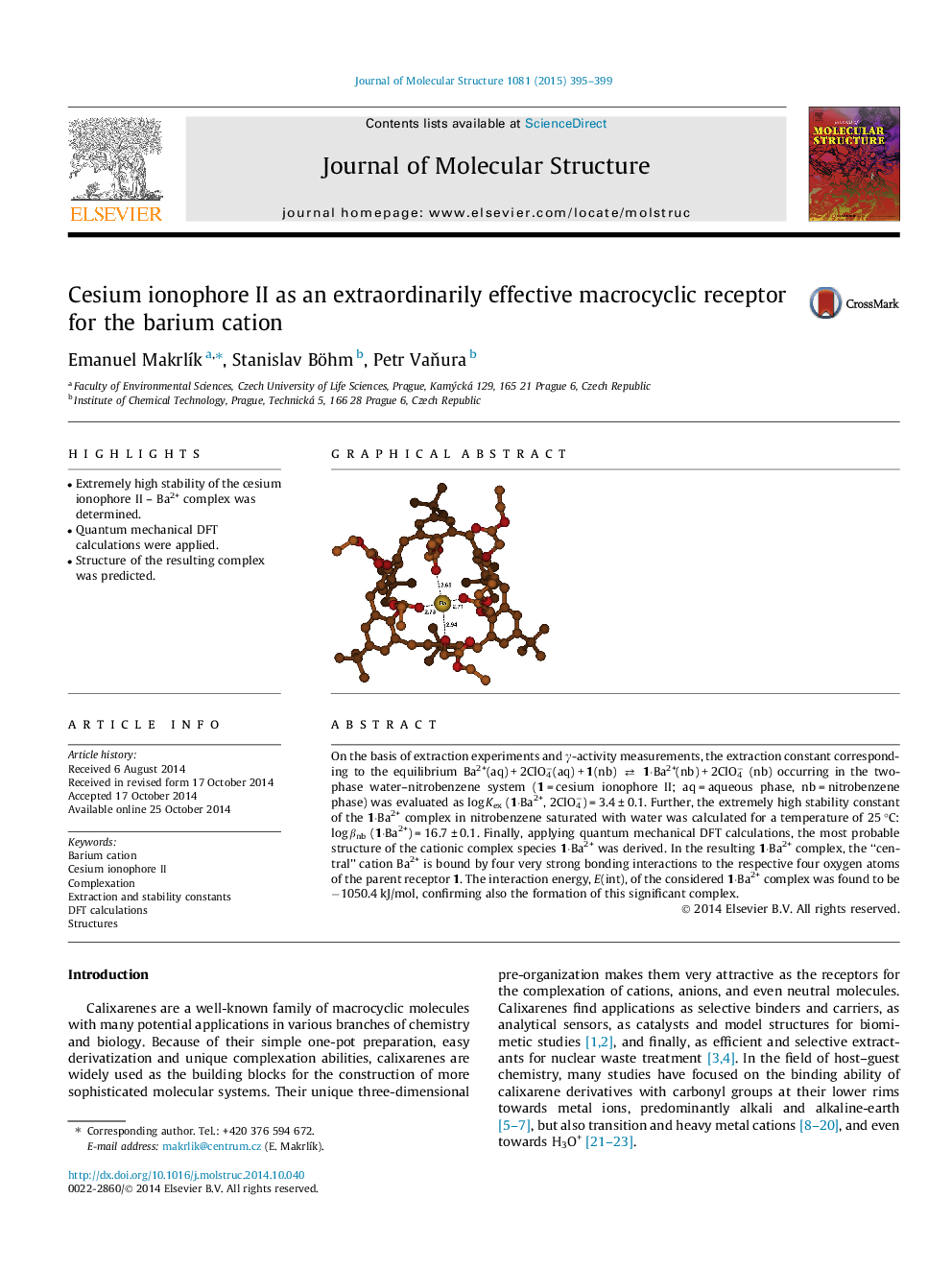| Article ID | Journal | Published Year | Pages | File Type |
|---|---|---|---|---|
| 1408350 | Journal of Molecular Structure | 2015 | 5 Pages |
•Extremely high stability of the cesium ionophore II – Ba2+ complex was determined.•Quantum mechanical DFT calculations were applied.•Structure of the resulting complex was predicted.
On the basis of extraction experiments and γ-activity measurements, the extraction constant corresponding to the equilibrium Ba2+(aq) + 2ClO4−(aq) + 1(nb) ⇄⇄1·Ba2+(nb) + 2ClO4− (nb) occurring in the two-phase water–nitrobenzene system (1 = cesium ionophore II; aq = aqueous phase, nb = nitrobenzene phase) was evaluated as log Kex (1·Ba2+, 2ClO4−) = 3.4 ± 0.1. Further, the extremely high stability constant of the 1·Ba2+ complex in nitrobenzene saturated with water was calculated for a temperature of 25 °C: log βnb (1·Ba2+) = 16.7 ± 0.1. Finally, applying quantum mechanical DFT calculations, the most probable structure of the cationic complex species 1·Ba2+ was derived. In the resulting 1·Ba2+ complex, the “central” cation Ba2+ is bound by four very strong bonding interactions to the respective four oxygen atoms of the parent receptor 1. The interaction energy, E(int), of the considered 1·Ba2+ complex was found to be −1050.4 kJ/mol, confirming also the formation of this significant complex.
Graphical abstractFigure optionsDownload full-size imageDownload as PowerPoint slide
